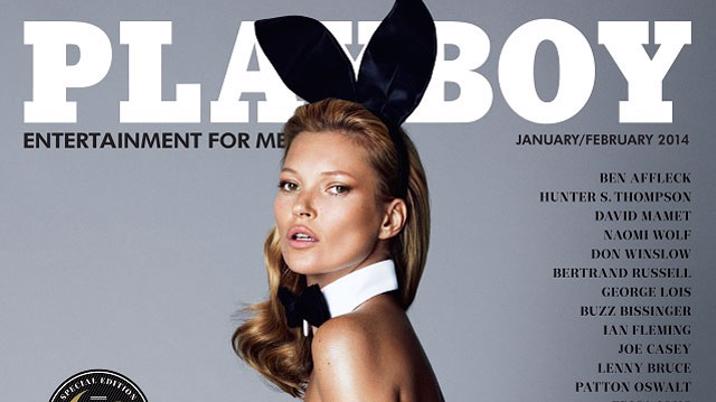
Repositioning is hard to do
In the year 2015, Playboy announced it was doing away with full frontal nudity. Had there been a publishing cousin of Yes Minister’s Sir Humphrey in the room at the time when that decision was taken, he would probably have sucked in a lung full of air through his teeth and pronounced the decision “very courageous”.
“Very courageous” were the words Sir Humphrey always used when he wished to divert his boss Jim Hacker from some course of action he considered reckless in the extreme. Sir Humphrey was pretty much always right because he had been dealing with the problems long enough to know that in any given situation, there is always the simple, dramatic remedy and that it is usually the wrong one.
Now two years later, Playboy are acknowledging that by bringing back the full-frontal flesh. The whole magazine industry is yucking behind its hand at the spectacle of exactly the kind of reverse everybody could have predicted. But wait. Maybe the whole magazine industry shouldn’t be in such a hurry to yuck. At the centre of every long-established title there’s a similar publishing dilemma.
The very thing a magazine is famous for is usually the same thing that places it in some form of straitjacket. There will have been editors of What Hi Fi who would have argued that the magazine would surely spread its wings if it could only shrug off its inherited obligation to tell its readers what was the best damned hi-fi. Whenever a magazine tries to abbreviate its title to its initial letters – as in referring to Good Housekeeping as GH, For Him and FHM or New Musical Express to NME – it’s always in the mistaken belief that this will somehow magically change the publication’s image and that that change will suddenly cause people who haven’t read it before to want to read it now. Neither is true. Your image is something you’re saddled with and you have to take the downsides with the upsides.
The Playboy dilemma was that the editorial positioning of the magazine as a magazine for the sophisticated man was somewhat at odds with what society has come to think of men who like looking at pictures of naked young women. The dilemma is a tension that is best left unresolved. Untune that string, as Shakespeare said, and you’re in all manner of trouble. Pull too far in one direction or another and that tension is lost and the magazine collapses in a heap.
You can never solve the dilemma but it might be possible to finesse it. If you finesse it successfully, you may make it possible for readers to overlook it. Long before the psychologists came up with the term ‘cognitive dissonance’, magazines have been successfully making it possible for readers to hold two contradictory ideas in their heads at the same time. Traditionally, the people who’ve been best at finessing this difference have been the women’s titles, and the higher end the more true that has been. Marie Claire used to put its signature article about female circumcision in such a place that you passed it on your way to the spread devoted to ruinously expensive handbags, thus allowing the reader to reassure herself that she'd suffered a little before having her pleasure.
Nobody actually read the long interviews with Norman Mailer in Playboy, nobody looked at the pictorials about cars, but their presence allowed the reader to flatter themselves that they were the kind of person who liked reading erudite interviews with gentlemen of letters and not just the kind of man who likes looking at pictures of naked young women. Whatever the word for the latter is.
All done in the best possible taste
The undisputed queen of having your cake and eating it is Emma Watson, who has built a whole empire out of being very pretty while reassuring people that her prettiness has some element of profundity about it. She half-exposes her breasts for Vanity Fair because, remember, if the magazine’s upmarket enough, you can do the most downmarket things within its pages. That doesn’t bother me. What gets me is the she talks about the link between fashion and empowerment. This link is something I have yet to hear anyone talk about in the real world. The fashion-empowerment conversation was developed entirely to make people who ought to know better feel comfortable while banking an enormous cheque. Don’t feel bad, Emma. Take the money while you can. It won’t be there for ever.
Online vs Offline
Proponents of offline, real world, bricks and mortar, flesh and blood shopping argue that the online insurgent will always be unsatisfactory as long as it bypasses the human element. I think they’re wrong. They’re wrong because one of the things we find most appealing about buying online is not having to deal with sales staff. For every case of a shop assistant helping the customer, there’s at least half a case of the presence of unhelpful, ill-informed, condescending or downright obstructive shop staff preventing the purchase from happening. If we’re going to buy the wrong thing, we would rather it be our own fault than the fault of some sales person who pulled the wool over our eyes and sold us the thing they wanted to sell rather than the thing we wanted to buy.
Everybody’s in favour of retaining their local book shop but, equally, everybody knows that buying a book online can often be easier because you don’t have to locate it, you don’t have to depend on a member of staff knowing what you’re talking about and then having it in stock. Online allows you in to the etailer’s stock control system. It doesn’t keep you on the wrong side of the counter.
The future is going to mean some sort of mixed economy in which both online and offline will co-exist. It’s obvious what you have to do to improve the online offering. You make the transaction frictionless. What’s even more important is that offline competitors realise that now that we’re in an attention economy, there is nothing more precious than a customer who comes in your shop and voluntarily engages your attention. This is something that retailers like Uniqlo recognise by having a young, welcoming person at the door to the street, greeting you and offering you a basket in which to place your purchases. And if the customer has not only come in but has also asked for something specific, they’ve effectively offered their hand in marriage. It’s your job to respond, to take them to where the merchandise is and to make sure that it answers their requirements. If you don’t do that, if you just airily wave in the direction and assume that the customer will find what they’re looking for, you’re not just rejecting that proffered hand. You are also guaranteeing that they will never come back to your shop again. You simply can no longer do that. It’s what the PRs call “reaching out”. It’s not just bad manners to fail to reciprocate. It’s bad business.
Magazines in surprising places
In his book The Revenge of Analog, David Sax celebrates those cases where “physical product” is holding out in the face of annihilation from digital forces. He looks at how Moleskine notebooks have prospered, how vinyl now commands a premium price from people who value its materiality and how the bookstores that weren’t taken out in the last cull are enjoying better business than they’ve known for years. To find examples of analogue success stories in the world of magazines, he comes to London and talks to the people behind the cult magazine aggregator Stack. There’s no doubt that he finds a lot of activity in this sector. You only have to go to certain select magazine boutiques in Soho to see that many ambitious, creative young people still like to work in ink and expensive paper and the supply of edgy lifestyle publications aimed at people who’ve been to art college shows no sign of letting up. I still think they have a major challenge in getting out of their self-selecting sub-culture into the wider world.
This was brought home to me recently while dining in an edgy new restaurant. The waitress brought a magazine with the bill. It was the restaurant’s own publication. You could tell it was not done by a publisher. It was printed on a non-standard size on heavy matt stock. You feel that they may have been taken in by the printer and paper supplier in a way that they wouldn’t have been taken in by their fishmonger or wine shipper. My lunch companion flicked through. Profiles of winemakers, critics on their favourite London places to eat, a piece about a former member of the Beastie Boys: all the stuff that the market is clamouring for. Since we were paying handsomely for the meal we wondered whether this might be thrown in. No, said the waitress. It was nine pounds, which was more than I’ve paid for any magazine in my entire life. We had dined well. However, we weren’t so drunk that we would have paid that.










